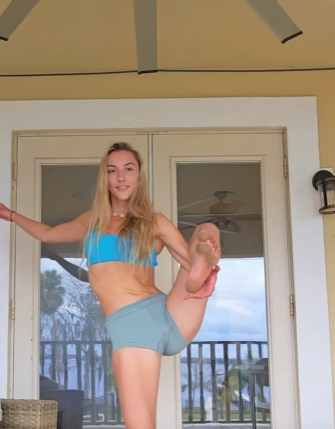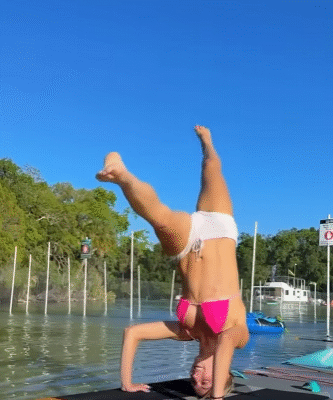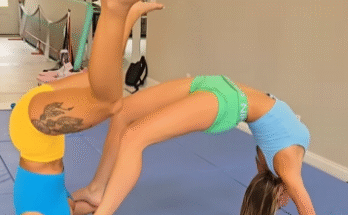
A proper workout isn’t complete without a cool-down routine. While many people focus heavily on warming up and exercising, the cool-down is just as essential. Skipping it can lead to muscle stiffness, dizziness, or even injury. A 10-minute cool-down helps bring your heart rate back to normal, reduces lactic acid buildup, and aids in muscle recovery.
Why You Need a Cool Down
After intense exercise, your heart is pumping faster, your blood vessels are expanded, and your muscles are in an active state. If you suddenly stop, your blood might pool in your legs, which can make you feel dizzy or even faint. A gradual cool-down allows your body to slowly transition from a high-energy state to a resting one. It also gives your mind time to relax and reflect.
What Should a 10-Minute Cool Down Include?
Your cool-down routine should focus on two major goals: lowering your heart rate and stretching your muscles. Ideally, you want to spend the first 5 minutes performing light cardio and the last 5 minutes on static stretching.

Minutes 1–5: Light Cardio (Bring Down the Heart Rate)
These light activities signal your body that the intense effort is over and it’s time to shift into recovery mode. You’re still moving, but at a slower pace.
1. Slow Walking (2 minutes)
After your workout, walk at a comfortable pace. Focus on taking deep, slow breaths in through the nose and out through the mouth. This helps regulate your oxygen flow and heart rate.
2. Arm and Shoulder Rolls (1 minute)
While walking or standing still, roll your shoulders backward and forward. Do slow arm circles in both directions to loosen up the upper body, especially after strength training or upper-body workouts.
3. March in Place or Gentle Jog (2 minutes)
If you did high-intensity cardio like running, cycling, or HIIT, march in place or lightly jog. Bring your knees slightly up and pump your arms. Keep the motion smooth and controlled.
Minutes 6–10: Full-Body Static Stretching
Now that your heart rate is lowered, shift your focus to flexibility and tension release. Hold each stretch for about 30–45 seconds. Never rush or bounce during stretches—go slow and steady.
1. Standing Hamstring Stretch
Stand tall, then slowly bend at the hips and reach toward your toes. Keep your knees soft and your back straight. You’ll feel a nice stretch along the back of your thighs.
2. Quad Stretch
Stand on one leg, bend the opposite knee, and bring your heel up toward your buttocks. Hold your ankle and gently pull. Keep your knees together and your torso upright. Switch legs after 30 seconds.
3. Calf Stretch (Wall or Floor)
Stand facing a wall. Place your hands on it, step one leg back, and press the heel into the floor. Lean slightly forward while keeping your back leg straight. This stretch targets the lower leg muscles.
4. Chest and Shoulder Stretch
Clasp your hands behind your back and lift your arms slightly while keeping your chest open. You should feel the stretch in your chest and shoulders—perfect for anyone doing push-ups, bench presses, or rows.
5. Seated Forward Fold
Sit on the floor with your legs extended straight in front of you. Hinge at your hips and reach for your toes or ankles. This stretch targets the spine, hamstrings, and lower back.
6. Cat-Cow Stretch (Spine Mobility)
Get on all fours. Inhale as you drop your belly and lift your head and chest (cow pose). Exhale as you arch your back and tuck your chin (cat pose). Repeat this slow transition to ease tension in your spine and core.

The Mental and Emotional Benefits of Cooling Down
Besides the physical advantages, cooling down offers mental clarity. Those few minutes give you time to reflect on your workout, notice how your body feels, and mentally prepare to transition back to your daily life. It’s a small moment of mindfulness that helps center your thoughts and promote relaxation.
Tips to Make the Most of Your Cool Down
- Stay Hydrated: Drink water during and after your cool down to replace lost fluids.
- Breathe Deeply: Use slow, controlled breathing to signal your nervous system that it’s time to relax.
- Focus on Areas You Used Most: If you ran, prioritize leg stretches. If you lifted weights, focus on arms, shoulders, and back.
- Make it a Routine: Don’t treat cooling down as optional. Your body and mind benefit every time you finish strong and recover properly.
- Use a Timer or Playlist: A short 10-minute playlist with calming music can guide your cool-down session and help you stick to the time.

Cool Down Variations for Different Workouts
After Strength Training:
Emphasize stretches for the muscle groups you just worked. If you trained legs, focus on hamstrings, quads, and calves. If it was an upper body day, stretch shoulders, triceps, and chest.
After Running or HIIT:
Prioritize heart rate recovery. Start with a walk or slow jog, then stretch your calves, hamstrings, hip flexors, and lower back.
After Yoga or Pilates:
Even though these are low-impact, they can still leave muscles tight. Spend time doing spinal twists, hip openers, or simply lie in Savasana (corpse pose) to let your body fully absorb the session.
Don’t Forget: Cooling Down Reduces Injury Risk
Muscle recovery is key to staying consistent and injury-free. A proper cool-down prevents tight muscles and helps you regain full range of motion. You’ll experience less soreness and recover faster for your next workout.
Ignoring the cool-down phase can lead to issues like delayed onset muscle soreness (DOMS), tight joints, and increased risk of cramps. In contrast, consistent cooling down helps improve circulation, flexibility, and muscle coordination over time.
Final Thoughts
The best workouts are those that end with intention. A 10-minute cool-down is not a waste of time—it’s an essential part of your fitness routine. Think of it as the bridge between your workout and the rest of your day.
Whether you’re a beginner or seasoned athlete, never skip the cool-down. It’s the calm after the storm—when you stretch, breathe, recover, and reflect. Make it a ritual, and your body will thank you with better performance, fewer injuries, and faster recovery.



